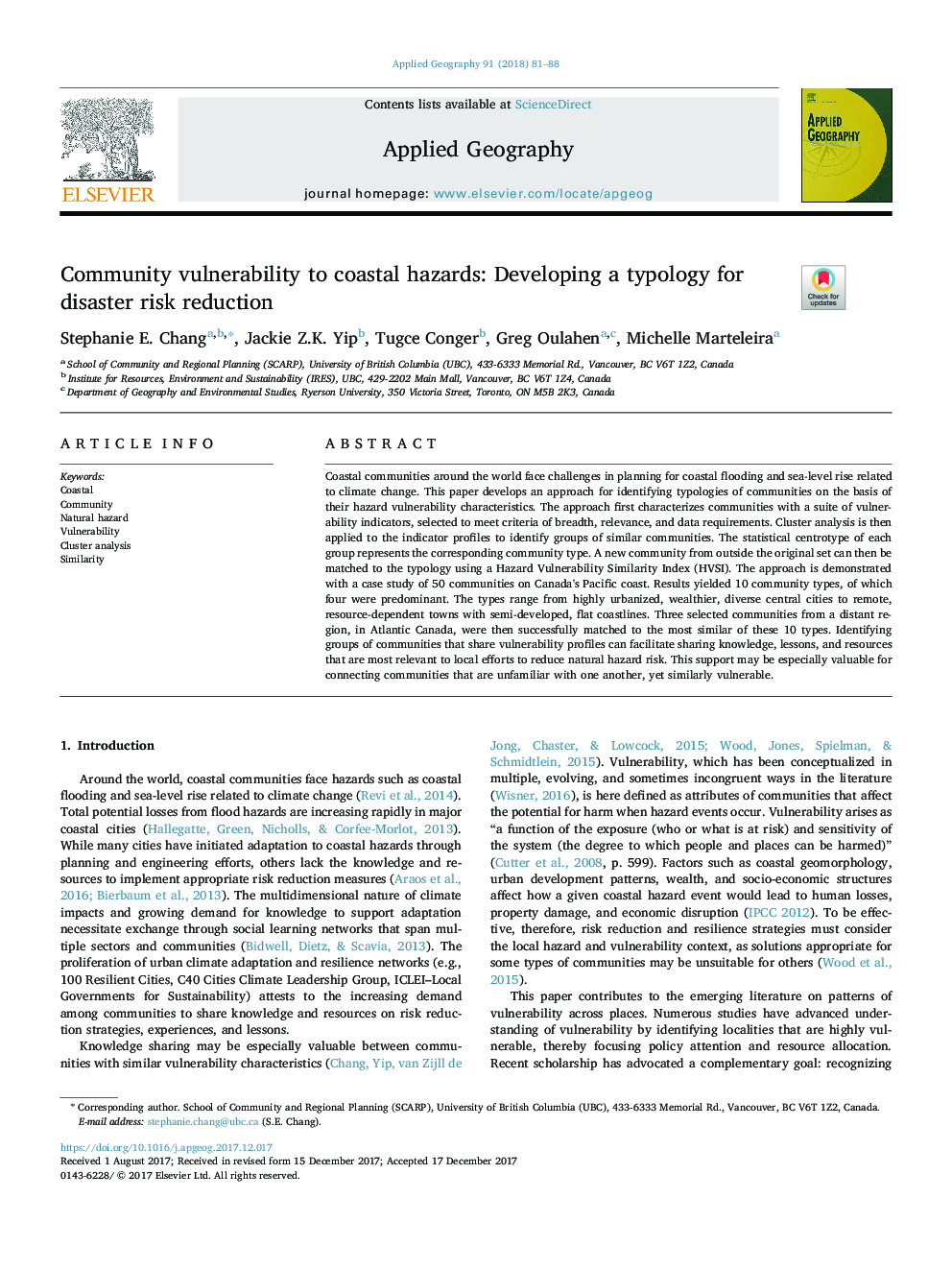| Article ID | Journal | Published Year | Pages | File Type |
|---|---|---|---|---|
| 6538332 | Applied Geography | 2018 | 8 Pages |
Abstract
Coastal communities around the world face challenges in planning for coastal flooding and sea-level rise related to climate change. This paper develops an approach for identifying typologies of communities on the basis of their hazard vulnerability characteristics. The approach first characterizes communities with a suite of vulnerability indicators, selected to meet criteria of breadth, relevance, and data requirements. Cluster analysis is then applied to the indicator profiles to identify groups of similar communities. The statistical centrotype of each group represents the corresponding community type. A new community from outside the original set can then be matched to the typology using a Hazard Vulnerability Similarity Index (HVSI). The approach is demonstrated with a case study of 50 communities on Canada's Pacific coast. Results yielded 10 community types, of which four were predominant. The types range from highly urbanized, wealthier, diverse central cities to remote, resource-dependent towns with semi-developed, flat coastlines. Three selected communities from a distant region, in Atlantic Canada, were then successfully matched to the most similar of these 10 types. Identifying groups of communities that share vulnerability profiles can facilitate sharing knowledge, lessons, and resources that are most relevant to local efforts to reduce natural hazard risk. This support may be especially valuable for connecting communities that are unfamiliar with one another, yet similarly vulnerable.
Related Topics
Life Sciences
Agricultural and Biological Sciences
Forestry
Authors
Stephanie E. Chang, Jackie Z.K. Yip, Tugce Conger, Greg Oulahen, Michelle Marteleira,
